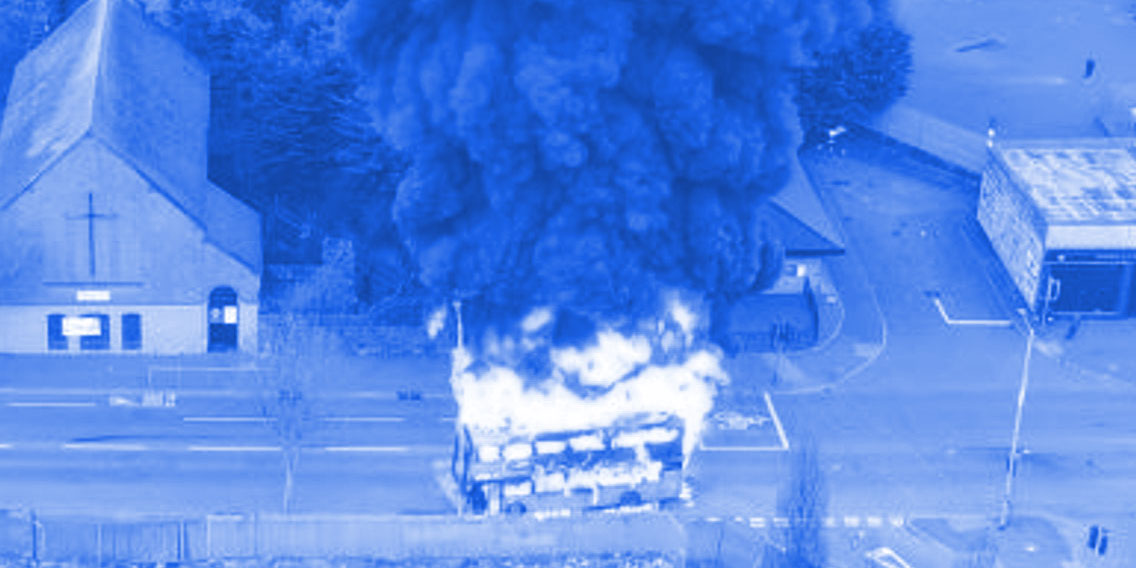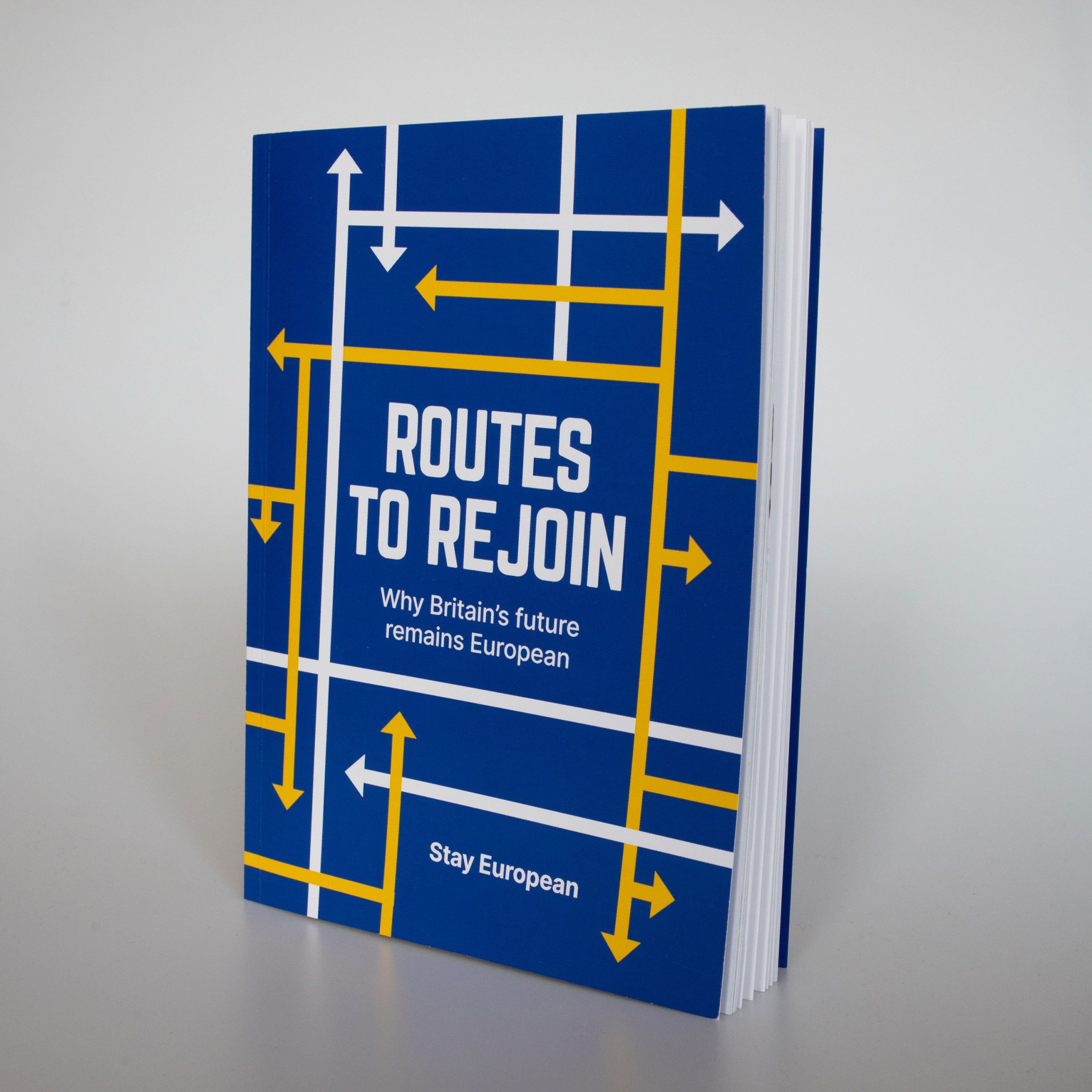Chapter 1: Brexit is not done
In a crowded field of lies, the biggest lie about Brexit is that it is ‘done’.
The media, following the government’s lead, portray Brexit as a switch that was thrown on one day, usually 31 December 2020, the end of the transition period. Everything after this is referred to as ‘after Brexit’. In this worldview, every warning about the consequences of Brexit can be disregarded if there were no visible ill effects at the beginning of 2021.
But Brexit didn’t ‘happen’ on any single date – Brexit is a long, drawn-out process that has only just started. Many industries are still in various transition periods in the deal, looking nervously at the months and years ahead, hoping the government will listen to their special pleading for a delay in whichever sword of Damocles is hanging over their particular sector. Much of the deal has not yet even been implemented – most notoriously, the Northern Ireland protocol.
It is not always clear where such issues are going to come from until they suddenly emerge. For example, in July 2021 – six months after Brexit was supposedly ‘done’ – the UK suddenly decided to dispute the £41 billion ‘divorce bill’ that it owes the EU, even though the formula was agreed back in 2018 and the UK has already started making payments.
Brexit is a constant background crisis that will periodically burst back into the headlines. It is a never-ending negotiation with a UK government that constantly reneges on its word. It is based on the belief that the rules do not apply to Britain, and so there will be no consequences for ignoring them. It is a complicated deal where the government can cause a new mess at any time by noticing – or pretending it has only just noticed – something in the deal that it dislikes.
It is a fragile project that only looks unstoppable because of the distorting mirrors of our media, our spineless political parties and our absurd electoral system. Sooner or later, it is going to tumble to the ground.
Brexit will never be done. It will be with us, causing pain for the population, the economy and future governments – until it is reversed. We prefer not to talk about ‘after Brexit’, but instead use the phrase ‘under Brexit’.
Northern Ireland’s impossible border
People like to say that Northern Ireland is complicated – and yes, it is. There isn’t space here to outline the long and sad history of the partition of Ireland and the near-century of violent conflict that followed.
But the central issue that Brexit causes in Northern Ireland is relatively straightforward. The form of Brexit the government chose – a hard Brexit where the UK leaves the Single Market and customs union – means that there must be a border between the UK and the EU Single Market. And that border has to go somewhere.
There are only two choices: the border either runs through the island of Ireland (between Northern Ireland and the Republic) or it runs through the UK (in the Irish Sea). Each of these options is unacceptable to one of the two communities in Northern Ireland.
The Northern Ireland peace process – culminating in the Good Friday Agreement, jointly guaranteed by the EU and the US – gave citizens of Northern Ireland a status where they can effectively choose to be either British or Irish. Travel to either location is unrestricted, and they can choose to apply for an Irish passport. It is a finely balanced agreement that bends over backwards to make sure no one is subject to a national identity that they do not identify with.
For the nationalist/republican community, a border through Ireland would represent a threat to their Irish identity; for the loyalist/unionist community, a border through the UK represents a threat to their British identity.
The Conservatives chose the latter of these options – embarrassingly for the Democratic Unionist Party, who supported Brexit in the referendum and even propped up the Tory government after the 2017 general election left Theresa May with a wafer-thin majority. Betraying their former allies, the Tories signed a deal putting the border in the Irish Sea – though bizarrely the government continues to claim that it has not done so.
Naomi Long of the cross-community Alliance Party said: “They denied the existence of borders, even as those borders were being erected. I think that that dishonesty, and the lack of clarity around these issues has contributed to a sense of anger in parts of our community.”
On an Irish Sea border, Theresa May said “No UK prime minister could ever agree to it.” But in the end Boris Johnson did agree to exactly that. He appears to have taken a similar position to his then-adviser Dominic Cummings, who allegedly once said that he doesn’t care if Northern Ireland “falls into the fucking sea”.
Yet whatever the UK’s position, the EU – heavily aware of its obligations to member state Ireland and never cavalier with peace processes – is not so irresponsible. The Brexit deal includes a section known as the Northern Ireland Protocol that aims to create a framework to allow trade to continue between Britain and Northern Ireland, while also protecting the EU Single Market.

The UK government has barely tried to implement the protocol – and its attempts, meek as they have been, have been met with the loyalist riots of April 2021, menacing graffiti near border posts and threats to border staff that stopped the agreed border checks from being properly implemented. The government has now postponed building the border posts until 2023 – but nothing is going to change in the intervening two years. Even if it gets over that obstacle, the Northern Ireland Assembly gets a vote in 2024 on whether the protocol should continue (see timeline).
The UK government – which does not understand Northern Ireland and generally tries to give it as little thought as possible – lurches from crisis to crisis on the issue, hoping something will turn up and agreeing to delays when there is a crunch moment (as with the multiple delays to the end of the chilled meats grace period).
Yet Northern Ireland remains, as it has been since the beginning, an irresolvable problem for as long as Britain keeps its current distance from the EU. To put it bluntly, it does not seem possible to build the border that the deal requires without sparking an upsurge of loyalist violence. The Good Friday Agreement is only 23 years old, and the events around the Northern Ireland protocol have seen loyalist paramilitaries withdraw their support for it (a decision they managed to announce despite their status as banned organisations).
The problem of Northern Ireland points firmly towards closer alignment with the EU, likely customs union membership at a bare minimum, by any sensible future government that wants to keep the peace. Long term, the only realistic alternative to that position is Irish reunification (see chapter 7).
Dealing with dishonesty
Here’s a dilemma: how do you do a deal with someone who you know will turn around shortly afterwards and try to break their word? That is the problem the EU faced as they negotiated the Brexit deal with Boris Johnson’s government.
To add to the initial lies of the referendum, the government had gone into the 2019 general election with a new fraud, the ‘oven-ready deal’. For this to work, they had to act like Brexit had no significant problems left to resolve. They made it screamingly obvious that their intention was to sign a deal, almost regardless of what it said, in order to ‘get Brexit done’ and then try to wriggle out of it later. If we could see that, then so could the EU.
The deal, remember, was in two stages. First they signed the withdrawal agreement, which was rushed through parliament in January 2020 in the aftermath of the December 2019 election. Then – while they were in the middle of negotiating the second part of the deal! – the British government publicly and theatrically reneged on the first part.
This was the Internal Market Bill, published in July 2020, and the ensuing crisis that centred on the UK’s plan to break international law in a “limited and specific way”. Apparently intended to give the government more negotiating leverage in Brussels, it did little but demonstrate how untrustworthy the UK had become as a negotiating partner, not just to the EU but to every other country it might try to negotiate with in future.
If they didn’t know it already, the EU couldn’t fail to get the message after that fiasco that it was trying to make a deal with a rogue state. That’s why the final Brexit deal includes a comprehensive suite of measures to police and ultimately punish any party that breaks it (and, obviously, there’s only one party that will try).
The deal includes rights to unilateral defensive measures and “rebalancing” in a variety of scenarios, including industry subsidies and regulatory divergence. This can see whole chunks of the deal suspended, including the re-imposition of tariffs and quotas.
This appears to set up a ‘sliding scale’ where the further the UK moves from alignment with the EU, the more it loses access to EU markets. This would become particularly relevant if the UK signed up to an alternative trade bloc with a different set of rules (see chapter 8 on CPTPP).
The EU’s chief negotiator Michel Barnier wrote in La Grande Illusion, his diaries of the Brexit deal negotiation, that he does not expect the UK government to wait long before “trying to use its new legislative and regulatory autonomy to give itself, sector by sector, a competitive advantage” – that is, unfair advantages created by taking part in EU markets without following EU rules. Calm and understated as ever, he adds: “We have tools to respond.” He has seen Johnson’s next moves coming a long way off, and the EU is ready for them.
The curse that gets worse
One important, though relatively little-known, reason why Brexit can’t be judged from the situation at the beginning of 2021 is that the rules get more stringent over time as more restrictions are phased in. This has got most attention around the grace periods in the Northern Ireland protocol, but the overall ‘border operating model’ also has three stages. We are currently only in stage 1, the most basic customs checks – though these alone have been enough to cause chaos for large numbers of traders with no previous experience of customs checks at all.
After several rounds of delays, most border deadlines are now sitting somewhere in 2022, and look likely to be delayed further. In January 2022, Britain is supposed to start implementing full customs declarations and the current option for delayed declarations goes away, and in July checks at the border start on a range of foods and other goods. In a situation where we may already have issues with food supply (see next chapter) this is likely to exacerbate the problems. The easy option is for the government to keep delaying these days for longer and longer – but it cannot kick the can forever.
Apart from the burden of the actual checks, this ratchet of rules is a disaster for small businesses that are struggling to follow this level of complexity: they will find that just as they have sorted out their customs agents, got used to making delayed declarations, got used to the tax situation, and so on, all the rules change again. (The ever-moving deadlines do not help with this, as they mean much information online is outdated and confusing.) For those who believe the government’s claims that Brexit is ‘done’, these extra changes in the rules will come as a surprise.

